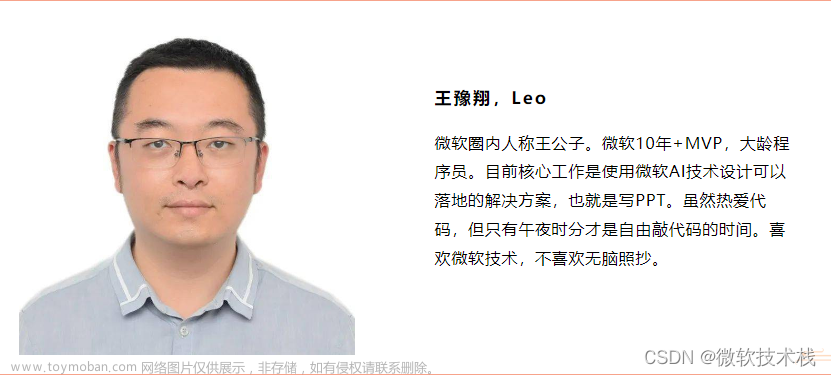微软Azure的TTS批处理接口调用
实习让我学会了很多orz
由于要做公司产品和微软产品的对比,故尝试写一个python代码调用微软Azure语音合成API来实现批处理功能。
要实现批处理功能首先得有一个Azure的账号,且要使用标准计费档,免费档是不能使用批处理功能的,它会返回forbidden,拒绝访问。
首先是引入的库。
import subprocess
import requests
import json
from time import sleep
然后是服务的key,要在微软Azure的平台上获取。把下面的SPEECH_KEY赋值为你的key就行,SPEECH_REGION也要换成相应的服务区域,例如我的就在eastus。
SPEECH_KEY = ""
SPEECH_REGION = "eastus"
text_path=""
get_data函数是我用来获取本地要合成的语音文本的,text_path为输入的文件路径。
def get_data():
global text_path
text_path=input()
with open(text_path,'rb')as f:
lines=[line[:].decode('utf-8') for line in f]
data=''.join(lines)
return data
send_data是post请求发送给Azure。
def send_data():
url="https://"+SPEECH_REGION+".customvoice.api.speech.microsoft.com/api/texttospeech/3.1-preview1/batchsynthesis"
data=get_data() #获取要合成文本数据
headers = {
"Content-Type": "application/json", # post提交数据的方式
"Ocp-Apim-Subscription-Key": SPEECH_KEY,
"Connection":"Keep-Alive"
}
data = {
"displayName": "batch synthesis sample",
"description": "my test",
"textType": "PlainText", # 负载的数据为纯文本,还可以用SSML格式
"inputs": [
{
"text": data # 待合成的数据文本
}
],
"properties": {
"outputFormat": "riff-24khz-16bit-mono-pcm",
"wordBoundaryEnabled": False,
"sentenceBoundaryEnabled": False,
"concatenateResult": True,
"decompressOutputFiles": False
},
"synthesisConfig":{
"voice": "zh-CN-XiaoxiaoNeural" # 这个是合成的语音音色
}
}
response = requests.post(url, json=data, headers=headers)
print(response.text) #得到返回信息
print(response.status_code) #得到返回状态
synthesis_id=response.json()['id'] #获取此次处理的id,用于后续的查询与语音的获取
print("synthesis_id",synthesis_id)
return synthesis_id
request_data是用来查询语音合成的状态的,看看有没有处理完毕。
def request_data(synthesis_id):
url="https://"+SPEECH_REGION+".customvoice.api.speech.microsoft.com/api/texttospeech/3.1-preview1/batchsynthesis/"+synthesis_id
#synthesis_id就是刚刚发送请求时得到的此次处理的id
headers={
"Ocp-Apim-Subscription-Key": SPEECH_KEY,
"Connection":"Keep-Alive"
}
response = requests.get(url,headers=headers)
print(response.text)
print(response.status_code)
status=response.json()['status'] #得到处理的状态
while status!="Succeeded": #如果不是succeded,即此次处理为not start或者running,说明还没处理好
response = requests.get(url,headers=headers) #再次查询
status=response.json()['status'] #获取状态
print(response.text)
print(response.status_code)
sleep(1) #等待一秒钟
#print(response.json()['outputs'])
download_url=response.json()['outputs']['result'] #得到下载语音的网址
print(download_url)
return download_url
download_data是下载处理好的语音用的。
def download_data(download_url):
url=download_url #这是之前得到的网址
# print(text_path)
filename=text_path.split(".")
# print(filename)
filename=filename[0]+"_result.zip" # 数据名称
# print(filename)
response=requests.get(url)
if response.status_code == 200: #如果获取成功
with open(filename,'wb') as file:
file.write(response.content) #把数据保存下来
print("success")
else:
print(response.status_code)
下面是main函数。文章来源:https://www.toymoban.com/news/detail-739176.html
def main():
synthesis_id=send_data() #调用各个函数完成请求的发送查询与数据下载
download_url=request_data(synthesis_id)
download_data(download_url)
if __name__ == '__main__':
main()
最后附上Azure的官方文档,也挺清晰的。→官方文档文章来源地址https://www.toymoban.com/news/detail-739176.html
到了这里,关于微软Azure的TTS接口调用的文章就介绍完了。如果您还想了解更多内容,请在右上角搜索TOY模板网以前的文章或继续浏览下面的相关文章,希望大家以后多多支持TOY模板网!








